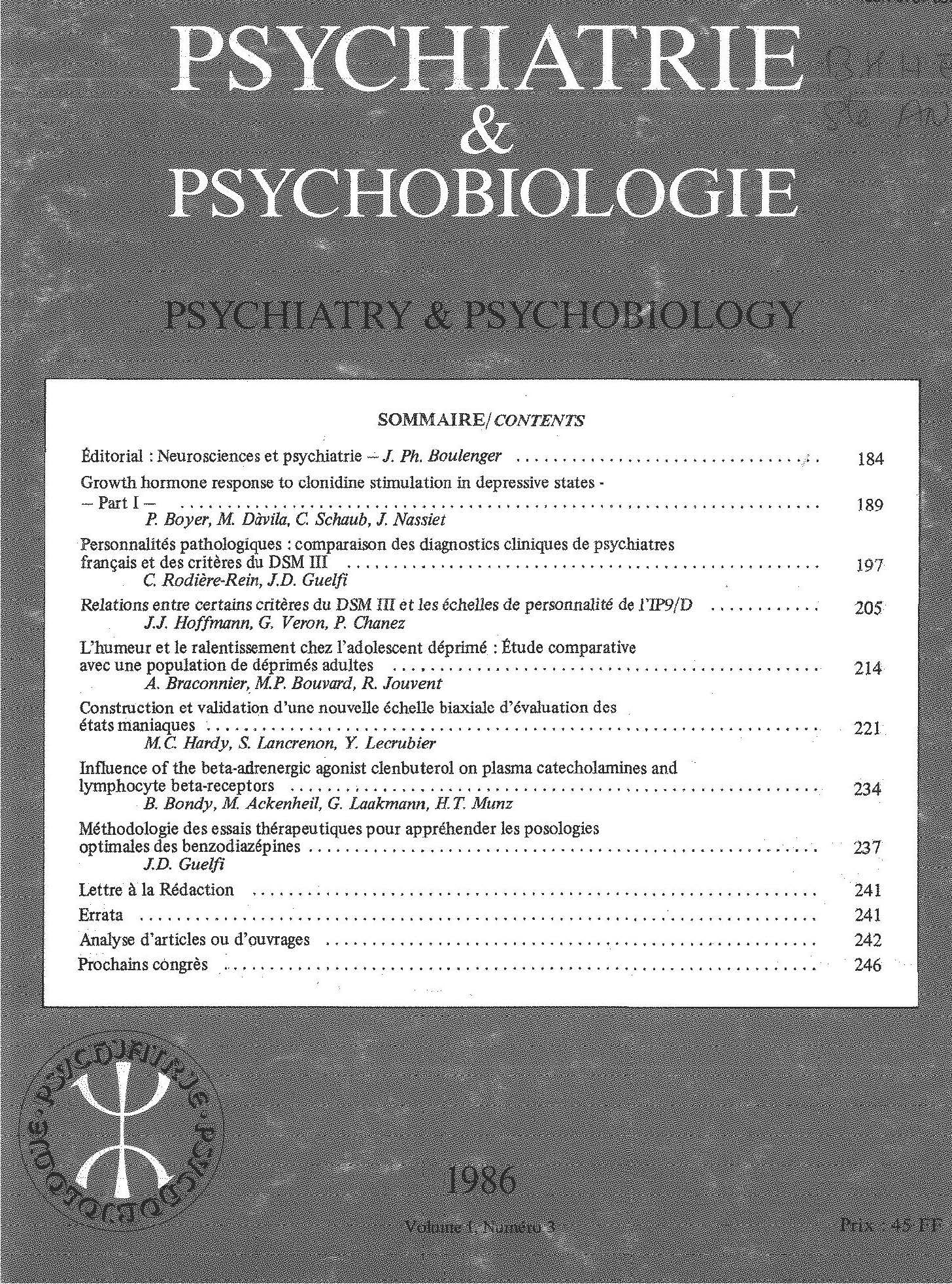Article contents
Anamnestic similarities in bulimic inpatients with and without a history of anorexia nervosa
Published online by Cambridge University Press: 28 April 2020
Summary
The significance of a history of anorexia nervosa as regards the diagnosis and treatment outcome for bulimia is unclear. In a retrospective analysis of medical records of 59 inpatients with bulimia (DSM-III), variables related to personal and psychiatric family history did not reveal any differences in bulimics subtyped according to previous anorexia nervosa as defined in the criteria of Russell (1979). These anamnestic data support the results of studies indicating that no specific clinical and outcome variables are correlated with a history of anorexia nervosa in bulimia. The lower body weight and longer duration of bulimia found in bulimic inpatients with a history of anorexia nervosa, however, should be further examined.
Résumé
L‘importance des antécédents anorexiques pour le diagnostic et le résultat du traitement des malades avec un diagnostic d'une boulimie est peu clair. Dans une analyse rétrospective des protocoles de 59 malades hospitalisés (et répondant dans leur état actuel aux critères du DSM-III pour bulimia) les antécédants familiaux et personnels ne montraient aucune différence entre boulimiques avec ou sans antécédents anorexiques selon les critères pour boulimie de Russell (1979). Nos résultats supportent le résultat d'autres études indiquant qu ‘il n'y a pas de corrélation entre antécédants anorexiques d'une part et les manifestations cliniques et le résultat du traitement d'autre part. Cependant le poids réduit et la durée prolongée des symptômes chez les malades avec l'histoire d'une anorexie devrait être examinés en plus de détail.
Keywords
- Type
- Original article
- Information
- Copyright
- Copyright © European Psychiatric Association 1989
References
- 1
- Cited by



Comments
No Comments have been published for this article.